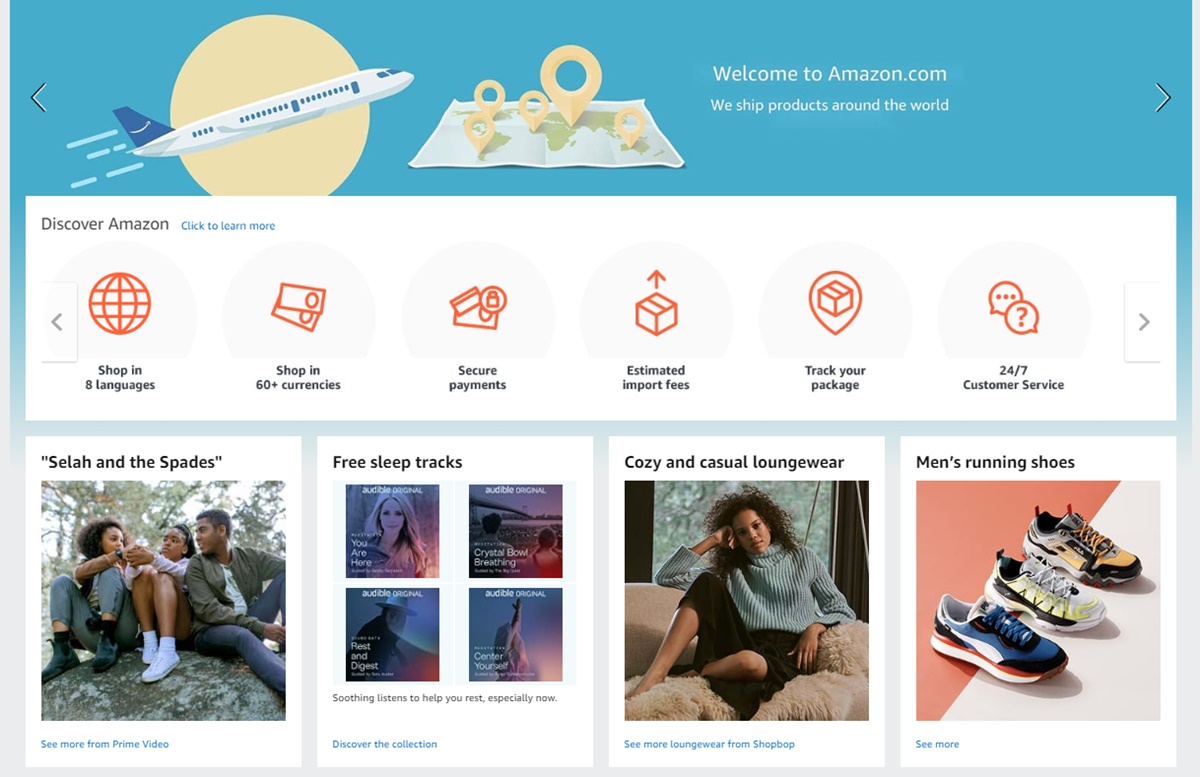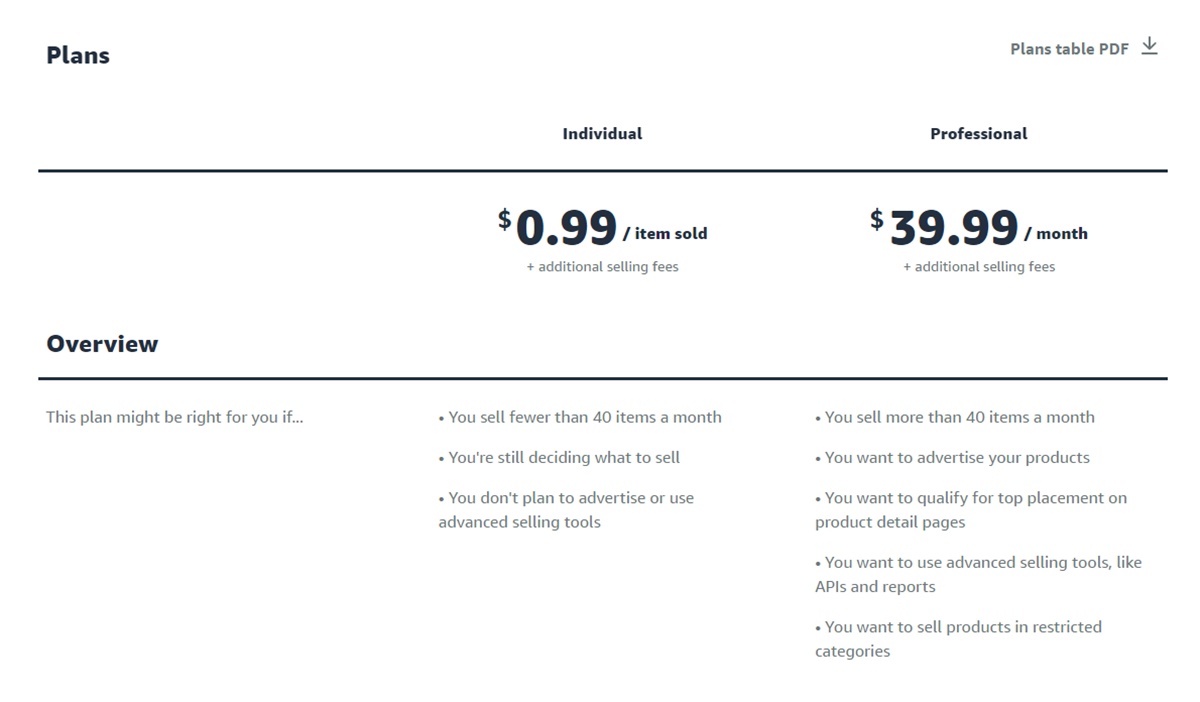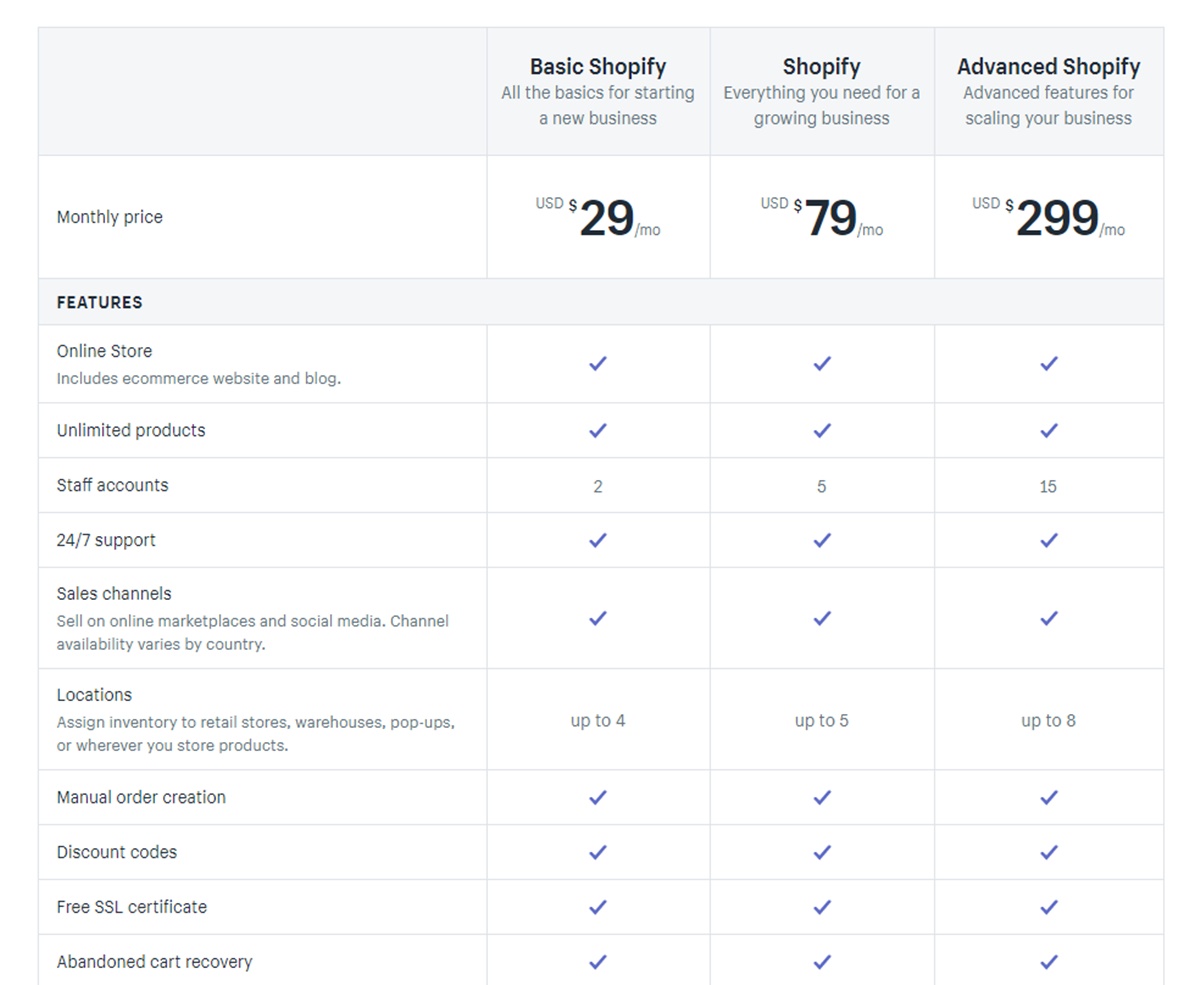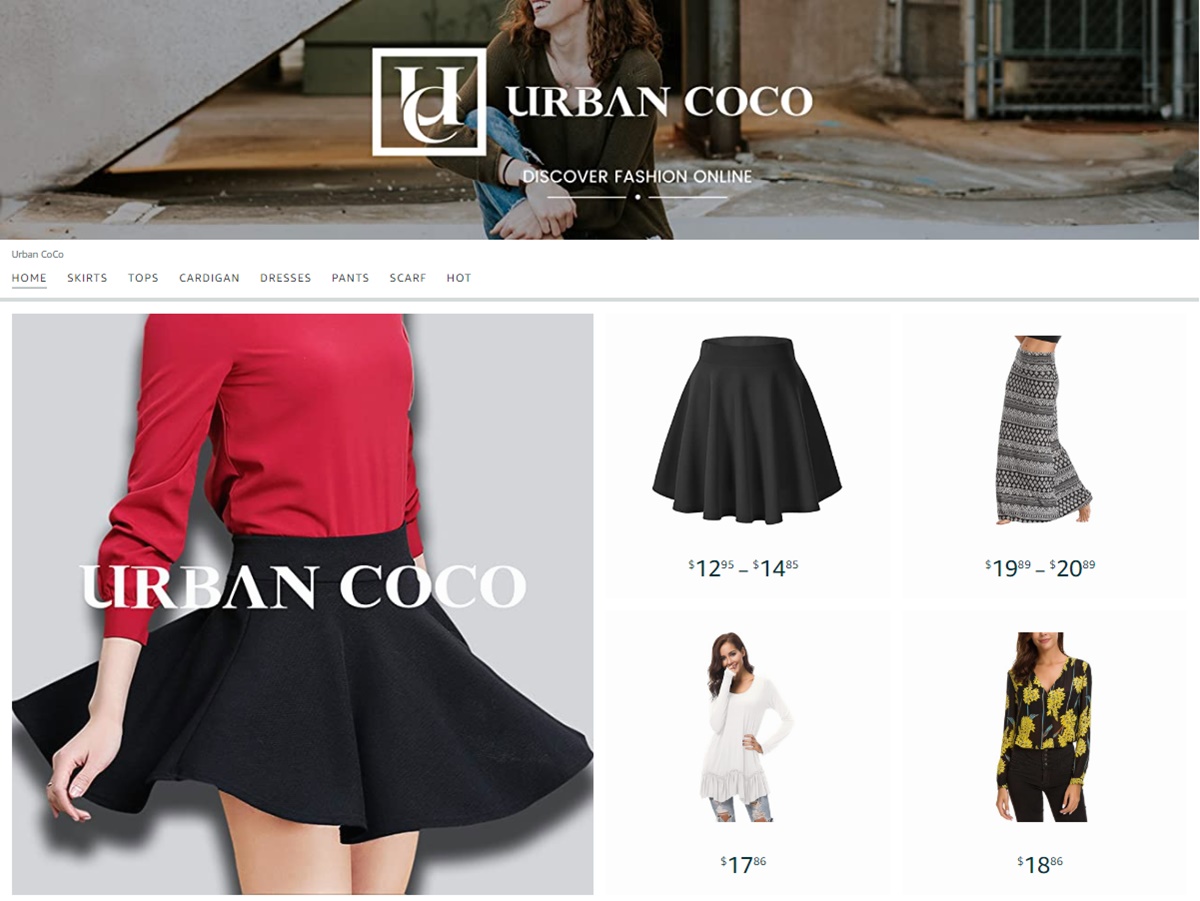Where Should You Sell on the Internet: Shopify vs. Amazon?
Making the decision about where to sell your products online is something that you, as an owner of an online business, must do at the outset. Shopify and Amazon, two well-known names in the world of eCommerce that you will probably end up using, provide huge opportunities for merchants.
Both platforms are well-liked and provide excellent eCommerce options. In contrast to Amazon, which is thought to have more than two million sellers, Shopify has reached one million merchants in 2019. Although there is a lot of opportunity for exposure and profit on these platforms, there are different advantages and difficulties when selling on them. Read this article to learn how to choose the one that is best for your products and selling strategy.
In this, we are going to review all the major features, pros & cons, pricing, ease of use, and more of the two eCommerce platforms. We will also show you how to combine the two platforms if you wish to know. Our goal is to give you a better understanding and decision of whether Shopify vs. Amazon (or both) is where you want to sell your products.
What is Shopify?

Shopify is a comprehensive cloud-based eCommerce solution that enables users to create, personalize, and effectively manage each aspect of their individual online stores. Numerous large corporations, including Tesla, Kylie Cosmetics, Budweiser, and Nestle, use it, but the platform's fundamental features are also excellent for small businesses with few employees.
You can access all eCommerce features like inventory management, payment acceptance, and shipping from a single dashboard if you create an account and pay a monthly fee. You won't have to worry about purchasing hosting from a third party because it is "cloud-based" and a hosted platform.
Additionally, Shopify offers a theme and app store with more than 70 professionally designed templates and thousands of compatible apps. Shopify POS can provide point-of-sale hardware if you need to sell your goods in a physical store.
Shopify was created with an emphasis on eCommerce to simplify online selling for all users.
What is Amazon?

You've probably heard of Jeff Bezos, the world's richest man, who founded Amazon, the largest online retailer. You can get immediate access to millions of buyers worldwide through Amazon, a marketplace. On the website, you can sell as a professional or as an individual, and there are various shipping options.
For new or very small businesses that lack the funds or resources to establish a stand-alone online store and build a clientele, Amazon is an incredibly useful resource. For established businesses, it serves as a side source of income and a way to send customers to their specific online stores.
It's simple to set up a seller profile and list products, but you must abide by Amazon's policies or you risk having your account suspended. Using Fulfillment by Amazon (FBA), which stores your inventory, manages packaging, and ships your store's orders, is an additional significant benefit of using Amazon.
Amazon is a marketplace for eCommerce that any seller can use to increase their profits.
Shopify and Amazon main difference
Shopify vs. Amazon
In this section, Shopify and Amazon will be used to examine all the key components that are necessary for an eCommerce business to succeed. Let's get going.
Shopify vs. Amazon: How to use

You want an online selling experience that is as seamless as possible, regardless of whether you're selling a single pair of socks or expanding your eCommerce empire. You haven't used Shopify if you believe that setting up your online store is too difficult. The platform is made to make developing an eCommerce website simple, similar to coloring with crayons. You have a neat, uncluttered design, incredibly simple navigation, and a ton of help pages.
Shopify excels at providing each merchant with easy access to effective sales tools. Shopify deserves praise for significantly simplifying the process of selling online by taking a centric approach to eCommerce.
With Amazon, all you have to do to get started selling is create an account and finish all the setup procedures. You can list your products, sell them on the website, ship them to customers, and get paid all on one website after registering. The best part is when you get paid.
This is a simple process, and Amazon has more tools to make it even easier. Shipping can be handled independently, or you can use Fulfillment by Amazon (FBA). If you have the money, you won't have to worry about it because this makes shipping, one of the most difficult aspects of selling online, less difficult. As an alternative, you let Amazon organize the procedure.
Both Shopify and Amazon are built with a number of practical tools to simplify the work process and make eCommerce as simple as possible. It is a draw because each platform is user-friendly in its own way. Although it takes less effort to get started selling on Amazon, Shopify makes it simple to create your own online store.
Shopify vs Amazon: Pricing
With any platform, your goal should be to generate more revenue than expenses. You should never decide on a purchase that will set you back hundreds of dollars just to sell a few items for $9.99 a month. Given that both services are affordable and suitable for any budget, the pricing comparison between Shopify and Amazon E-commerce is difficult.
Amazon has too pricing plans:
- - The Individual Selling plan has no monthly fee, but you pay $0.99 per item sold. There are also extra selling fees, which are determined by the category of the products you are selling.
- - The Professional Selling plan is $39.99 per month, no fee per item sold, plus extra selling fees as well.
Since the Individual plan has fewer features and only charges you when you make sales, it is suitable for any store that sells fewer than 40 items per month. You can access order reports, achieve top placement on product detail pages, add tens of additional categories, and alter shipping rates with the Professional plan.
Both plans would cost more if FBS were used, but its pricing is flexible based on your products and business.

More features are available with more expensive pricing plans. When you subscribe for a year, you save 10%, and when you subscribe for two years, you save 20%. You already have everything you need to start an online store with the Shopify Basic plan; you can upgrade to a higher plan later on and add apps to expand its features.
Additionally, there are Shopify Lite and Shopify Plus, both of which cost $9/month and allow you to use Shopify features on an existing website with Facebook. Any pricing plan may incur additional costs if third-party apps are added. Use the apps if they enable you to expand your company and show an increase in revenue or profit.
Shopify offers the best value for money for businesses of all sizes in terms of pricing. It may be less expensive than Amazon's Professional plan, and the pricing is clear, making budgeting simpler for you.
Shopify vs Amazon: Store Design

Sales in a store are directly impacted by poor design. If clicking on any page of your website is annoying, a visitor may leave even before taking a look at your products. Therefore, it follows that if you have the freedom to design your website in a more appealing way, customers will stay on it longer and make more purchases.
You have a great deal of control over the structure and appearance of your online store with Shopify. You can choose from more than 70 themes in the Shopify Theme Store and customize them to fit your brand, so you don't have to start from scratch. There are 64 premium themes that range in price from $140 to $180, and there are 8 free themes. If you want to establish a distinctive brand identity, you can edit, customize, and switch the store's themes.

Amazon's design options are more constrained. The layout of all Amazon stores is the same, with banner ads and product placement. Although you can add descriptions and images, the overall design is still that of an Amazon store, not a standalone one. Products are listed in image blocks on the homepage. Customers will love this, but it can be difficult to direct visitors to just one website.
You can customize some Amazon elements to improve the appearance of your stores. However, overall, it is considerably less adaptable than what Shopify has to offer. Shopify thus prevails in terms of store design. Its customization is excellent for developing a distinctive brand identity and maximizing a website's marketing potential.
Shopify vs Amazon: Payment methods

You frequently have to pay additional fees on top of the upfront cost. The payment options that the platform offers have an impact on transaction costs and credit card rates. To avoid going over budget, make sure before committing.
Amazon accepts Amazon Pay as its primary method of payment. PayPal is not permitted, but credit and debit cards still can be accepted. Depending on the kind of product, fulfillment fees for FBA range from $2.41 to $137.32. Additional monthly fees for inventory storage range from $0.69 to $2.40 per cubic foot. Size, volume, product type, and season all affect the prices.
Shopify Payments is a payment processor that is exclusive to Shopify. You wouldn't be charged any transaction fees if you adopted this strategy. However, only a few nations have access to it. In addition, Shopify offers more than 100 different payment processors, such as PayPal and Amazon Pay. Depending on your pricing plan, these have transaction fees ranging from 0.5% to 2%.
However, all payment gateways, including Shopify Payments, charge credit card fees. For Shopify's Basic, Shopify, and Advanced plans, the standard credit card rate is 2.9% + 30, 2.6% + 30, and 2.4% + 30, respectively. All plans have lower in-person credit card rates, with Basic Shopify starting at 2.7%.
Shopify triumphs in terms of payment options thanks to its greater selection and clear pricing for every level. Amazon's fees can change abruptly, which makes it more difficult for store owners to plan their budgets.
Shopify vs Amazon: Support

The assistance you receive when using a new platform is crucial to your work process, especially when unanticipated events like the current pandemic occur.
Amazon's customer service is not particularly well known. You can call the phone support number and ask to be called, and someone will do so. Additionally, there are forms you can fill out and forums where you can talk with other sellers. However, it is not exactly a user-friendly support system, as there is frequently feedback regarding delayed responses and dubious decisions.
On the other hand, Shopify has a robust support system that includes video tutorials, live chat, social media, forums, email, and phone support that is available around-the-clock. Nearly all of your needs can be met, and it can also assist you in developing new skills. Just pick up the phone if you need assistance right away. You can easily navigate through a ton of resources in the Help Center's articles and guides to find answers.
Therefore, Shopify is clearly the winner in terms of support. There are many more options for help, and it is much simpler. Although Amazon does provide support, it is not nearly as helpful as what Shopify provides.
Shopify vs. Amazon: Who is the winner?
Amazon vs. Shopify The conflict in e-commerce is between two powerful platforms for sales. Each one can assist you in a different way and differs in terms of features, design, pricing, and other factors. Overall, I continue to advise anyone starting an eCommerce business to use Shopify because it is a stronger option. It provides you with long-term control, scalability, and a stronger brand identity.
You can use Amazon if you're a small business owner who doesn't want to pay a one-time fee, but the additional costs are hard to predict and estimate. For a win-win store, you can also incorporate Amazon into Shopify, but the decision to do so is entirely up to you.
Thank you for reading
Comments
Post a Comment